Reliability of skin-to-core interface in sandwich composites for dynamically loaded applications
Sandwich structures have been widely used in many modern engineering applications. Due to manufacturing defects or in-service damage caused by loading and/or environment conditions, debonding may easily occur between the facesheets and the core of sandwich structures. These debonding regions reduce the strength and the stiffness of the structure and also influence its dynamics response. In turn, vibration may cause debonded regions to grow further, weakening the structure more or even leading to its complete fracture. Therefore, the study of the strength of the facesheet-to-core interface and evaluation of the influence of debonded regions on the vibration response of sandwich structures are critical issues in practical applications of sandwich materials.
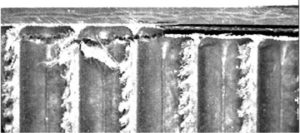 |
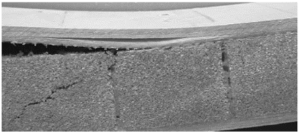 |
| Tomblin et al. , 1998 | Belingardi et al. , 2003 |
Crack growth tests of sandwich specimens made of aluminium facesheets and the Nomex core, and carbon fibre-reinforced polymer composites facesheets and the PVC core with different loading setups applied to the specimens in both static and dynamic configurations will be conducted to study the effect of core types on the facesheet-to-core adhesion and the fracture behaviour of the sandwich composites. Both the Mode I and Mode II energy release rate associated with facesheet/core debonding will be studied following the fracture test configurations:
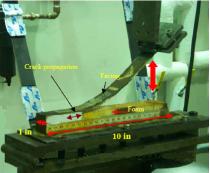 |
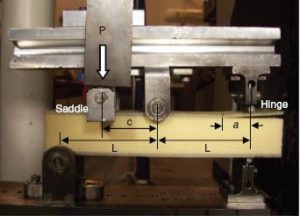 |
| Siriruk A. et al., 2009 | Quispitupa A. et al., 2010 |
To validate experimental results and predict interfacial failure evolution in sandwich composites subjected to dynamic loading , numerical models based on Finite Element Method (FEM) will be elaborated. Such finite element models have already demonstrated their accuracy and efficiency for solving variety of tasks concerning with the static loading case of composites such as
- the evaluation of Stress Intensity Factors (SIF) using the J-integral domain approach:
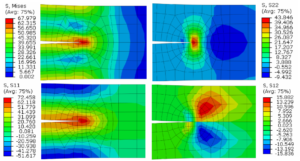 |
| Burlayenko V., Sadowski T., 2010 |
- the prediction of crack growth in the fracture specimens under assumptions of quasi-static loading using the virtual crack closure technique (VCCT) or cohesive zone model (CZM) approach:
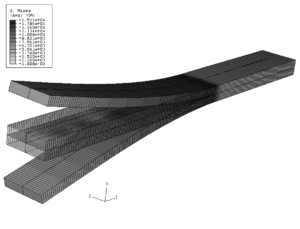 |
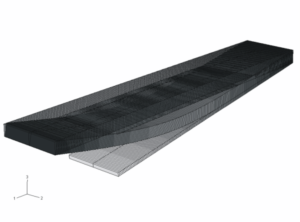 |
| Burlayenko V., Sadowski T., 2008 | |
- the modelling both a linear modal dynamic response and a nonlinear dynamic behaviour, where contact and friction phenomena are taken into account, of sandwich panels containing of a facesheet-to-core debond:
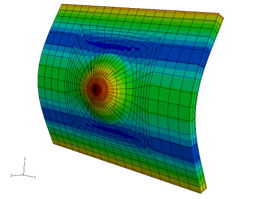 |
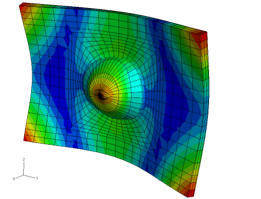 |
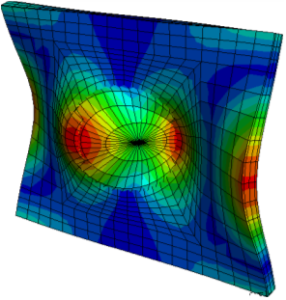 |
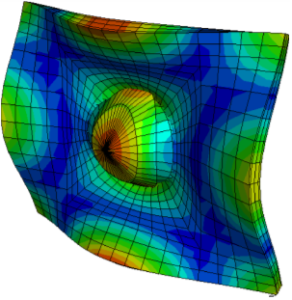 |
| Burlayenko V., Sadowski T., 2009 | |
and
| Burlayenko V., Sadowski T., 2011 |
The application of these models to the dynamic fracture analysis of sandwich composites has a variety of difficulties related to modeling facesheet/core interface debonding:
- the influence of inertial effects of stress waves on near-field stress around debonding front (crack tip), and their effects on the far-field stress state and the deformed form of sandwich structures as a result dynamic fracture criteria instead of quasi-static ones should be used;
- the velocity of debonding propagation affects both the
- A reliable experimental testing of sandwich specimens for extracting required material parameters
Therefore, the outcomes of the project will allow one to get advancement in understanding the singular stress field in the vicinity of crack tip along the bi-material interface under dynamic loading. In turn it gives us to increase the accuracy of the method proposed for modelling because various real-like effects can be incorporated into the model.